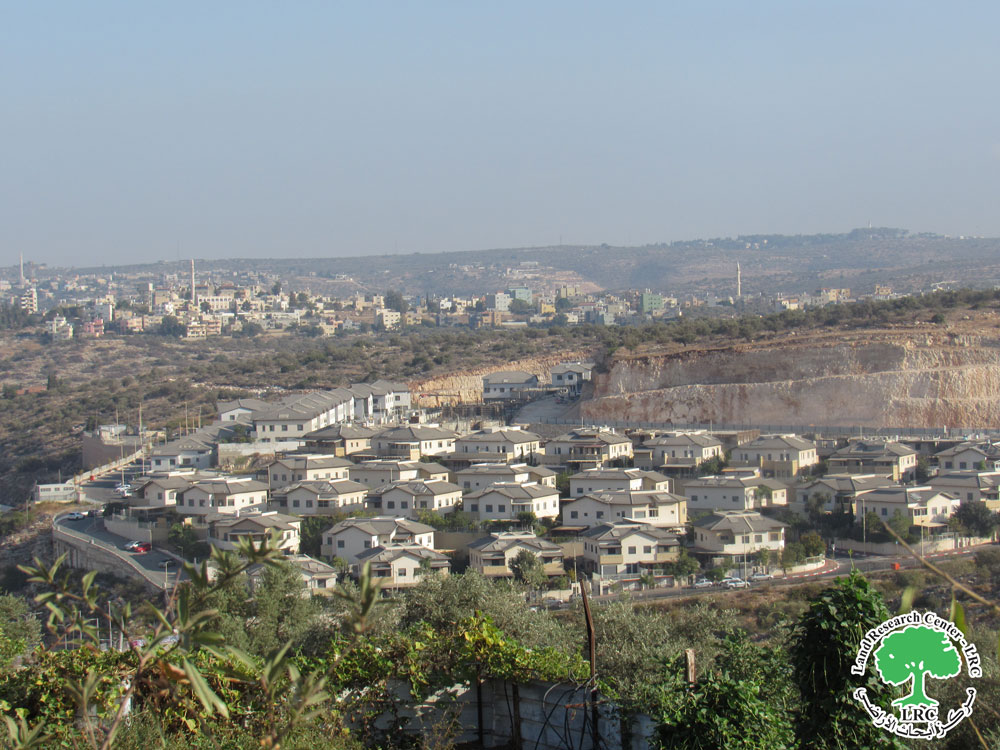- Violation: continuous colonization of Salfit lands.
- Location: Salfit city.
- Date: 14/02/2019.
- Perpetrator: The Israeli occupation government.
- Victims: people of Salfit.
Description:
The Israeli far- right minister of Education Naftali Benett ratified building a medical college in “Ariel” University at “Ariel” settlement in Salfit.
“Ariel” settlement is built on privately owned Palestinian lands confiscated since the 80s. The occupation considers the illegal settlement one of Israel’s main cities , and constantly supports its development.
This resolution is dangerous as the occupation now applies its laws regarding education on settlements in the Palestinian territories , settlement construction in area C is considered a flagrant violation of international agreements and conventions.
The responsible on colonization file in Salfit governorate Jamal Hamad said that the occupation’s measures in area C are a violation of international law, that apparently Israel does not take into account.
“Ariel” university was established in 1982 and consists of 12 research centers and fields of study , the University has 1400 students , of which 10 % are foreigners.
About Ariel:
It is one of the biggest colonies in size in Salfit governorate. The occupation gave it the title of “Capital of Samaria”. Ariel dates back to 1978; it is when the colony was established in the aftermath of Camp David agreement between Egypt and Israel.
The colony started on 500 confiscated dunums from Salfit city and Marda village to later seize 13775 dunums, of which 2479 dunums are the colony’s built-up area.
Ariel now accommodates a collage and a number of factories, hotels and residential blocs. Until 2005, its total population mounted up to 16520 colonists.
The municipal borders of the colony is four times the size of its built-up area. This gives it the advantage to potential and future expansions. “Ariel” is the third biggest colony in the West Bank and Jerusalem in size and number of colonists . after “Maale Adoumim” and “Pezgat Zaev”.
Land Research Center sees Israel continuous expansion on colonies in the West Bank and Jerusalem at the expense of Palestinian and lands a flagrant violation of Human Rights and all international laws and conventions, which prohibit disposition of public properties in occupied countries.
UN Resolutions
UN Security Council Resolution 242 of 1967: calls for
- the Withdrawal of Israel armed forces from territories occupied in the recent conflict;
- Termination of all claims or states of belligerency and respect for and acknowledgment of the sovereignty, territorial integrity and political independence of every State in the area and their right to live in peace within secure and recognized boundaries free from threats or acts of force.”
UN Security Council Resolution 449 of 1979: the Security Council determined:
- “that the policy and practices of Israel in establishing settlements in the Palestinian and other Arab territories occupied since 1967 have no legal validity and constitute a serious obstruction to achieving a comprehensive, just and lasting peace in the Middle East”
UN Security Council Resolution 452 of 1979: states that
- “the policy of Israel in establishing settlements in the occupied Arab territories has no legal validity and constitutes a violation of the Fourth Geneva Convention relative to the Protection of Civilian Persons in Time of War of 12 August 1949” and “calls upon the Government and people of Israel to cease, on an urgent basis, the establishment, construction and planning of settlements in the Arab territories occupied since 1967, including Jerusalem.”
UN Security Council Resolution 465 of 1980:
- It expressed concern at Israeli settlement policy in the Arab territories and recalled resolutions 237 (1967), 252 (1968), 267 (1969), 271(1969) and 298 (1971). It further called upon the State and people of Israel to dismantle such settlements. The resolution calls on all states ‘not to provide Israel with any assistance to be used specifically in connection with settlements in the occupied territories
The Land Research Center
LRC














